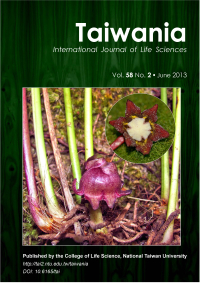Research Paper
Estimation of Tissue Distribution of mRNA Transcripts for Desaturase and Elongase Enzymes in Channa striata (Bloch, 1793) Fingerlings using PCR Technique
M. Aliyu-Paiko, A. Jaya-Ram, A.S.C. Chong, R. Hashim and O. Amuzat-Aliyu
Published on: 10 June 2013
Page: 112 - 118
DOI: 10.6165/tai.2013.58.112
Abstract
Fish species are varied in their capacity to biosynthesize n-3 highlyunsaturated fatty acids (HUFA) such as eicosapentaenoic and docosahexaenoic acids (EPA & DHA) that are crucial to the health and well-being of all higher vertebrates. Experts report that HUFA metabolism involves enzyme-mediated fatty acyl desaturation (FAD) and elongation (FAE) processes. In previous studies, different workers cloned, characterized, identified and reported several genes for FAD and FAE enzymes in different fish species such as Atlantic salmon, gilthead seabream, rainbow trout and zebrafish, and also demonstrated the up- and down-regulation in the activity of these enzymes in response to fluctuations in dietary HUFA. In this paper, we report on the expression of genes (mRNA transcripts) for FAD and FAE enzymes in different tissues of Channa striata (Bloch, 1793) fingerling, to evaluate the tissues of the fish in which activity of both enzymes are high. To achieve this objective, we used conventional polymerase chain reaction (PCR) technique to isolate and quantify the absolute copy number for each gene transcripts from 8 different tissues of the fish (reared with a commercial feed). Our estimate show that the distribution of the 2 enzyme transcripts were significantly (P < 0.05) higher in the liver and brain of C. striata than detected in the 6 other tissues evaluated (muscle, ovary, testis, intestine, kidney and skin). Subsequently, we discuss here extensively, the implication of this observation with respect to the use of vegetable oils (VO) as substitute to fish oil (FO) in diets for freshwater fish species.
中文摘要
不同的魚種其合成n-3高度不飽和脂肪酸之能力也不同,這些高度不飽和脂肪酸如EPA和DHA對於高等脊椎動物的健康和生長都扮演重要的角色。眾多專業報告都指出高度不飽和脂肪酸涉及酵素媒介脂肪酸去飽和作用和脂肪酸延長作用。在過往研究中,不同的研究團隊都針對各魚種之FAD和FAE酵素基因做過複製、描述與鑑定,如大西洋鮭、金頭鯛、虹鱒魚和斑馬魚,這些研究也證實了以上酵素的活性調控與高度不飽和脂肪酸之攝取有關。本篇研究呈現了FAD和FAE酵素在線鱧仔稚魚體內不同組織的基因表現情形,並鑑定出體內兩種酵素都呈現高度活性的組織。為達到此目的,本研究使用了傳統聚合酶連鎖反應技術來分離及量化自魚體中八個不同組織分離出之基因轉錄體(該魚種以商業飼料飼養)。研究結果指出線鱧仔稚魚的FAD、FAE的酵素轉錄體分別在肝組織及腦組織擁用有比其他六種組織(肌肉、卵巢、睪丸、小腸、腎臟和皮膚)顯著更高的量(P < 0.05)。本文也就此次觀察結果,討論在淡水魚飼料中使用植物油作為魚油替代物之可行性。
Keyword: Channa striata, desaturase, fatty acid, gene, mRNA expression, PCR.


